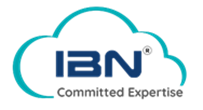Q1: What are SOC 1, SOC 2, and SOC 3?
A1: SOC (Service Organization Control) reports are a series of standards developed by the American Institute of Certified Public Accountants (AICPA) to help service organizations demonstrate their commitment to security, availability, processing integrity, confidentiality, and privacy. SOC 1 is for controls relevant to financial reporting, while SOC 2 and SOC 3 are for controls related to security, availability, processing integrity, confidentiality, and privacy.
Q2: What is a SOC 1 report?
A2: A SOC 1 report is an attestation report that focuses on controls relevant to financial reporting. It is intended for service organizations that provide services that impact their clients' financial statements.
Q3: What is a SOC 2 report?
A3: A SOC 2 report is an attestation report that focuses on controls related to security, availability, processing integrity, confidentiality, and privacy. It is intended for service organizations that handle sensitive client information, such as data centers, cloud computing, and managed IT services.
Q4: What is a SOC 3 report?
A4: A SOC 3 report is a public-facing version of a SOC 2 report. It provides a summary of the results of the SOC 2 examination and is designed for general use. Unlike SOC 2, which is for restricted use, SOC 3 reports can be freely distributed.
Q5: Who conducts SOC audits?
A5: SOC audits are typically conducted by independent third-party auditors, often certified public accountants (CPAs) or audit firms with expertise in information security and controls. These auditors assess and report on the effectiveness of a service organization's controls.
Q6: What are the key components of a SOC report?
A6: The key components of a SOC report include the description of the system, the suitability of the design of controls (Type I report) or the operating effectiveness of controls (Type II report), and any identified exceptions or instances of non-compliance.
Q7: What is the difference between SOC 1 Type I and SOC 1 Type II reports?
A7: A SOC 1 Type I report evaluates the suitability of the design of controls at a specific point in time, while a SOC 1 Type II report assesses the operating effectiveness of controls over a specified period (usually a minimum of six months).
Q8: What is the scope of SOC 2 reports?
A8: SOC 2 reports focus on controls related to security, availability, processing integrity, confidentiality, and privacy. The scope is determined by the organization and its specific systems and services.
Q9: How long is a SOC 2 report valid?
A9: SOC 2 reports are typically issued for a specific period, commonly covering a fiscal year. It's common for organizations to undergo annual SOC 2 assessments to maintain current reports.
Q10: Can organizations use SOC reports for marketing purposes?
A10: While SOC 1 reports are primarily used for internal purposes and may be shared with clients under certain circumstances, SOC 2 and SOC 3 reports can be used for marketing as they demonstrate an organization's commitment to security and compliance. SOC 3 reports are specifically designed for public distribution.
It's important to note that the information provided here is a general overview, and specific details may vary based on the organization, the type of services provided, and the audit process. Organizations seeking SOC reports should consult with qualified professionals to understand their specific requirements and obligations.

